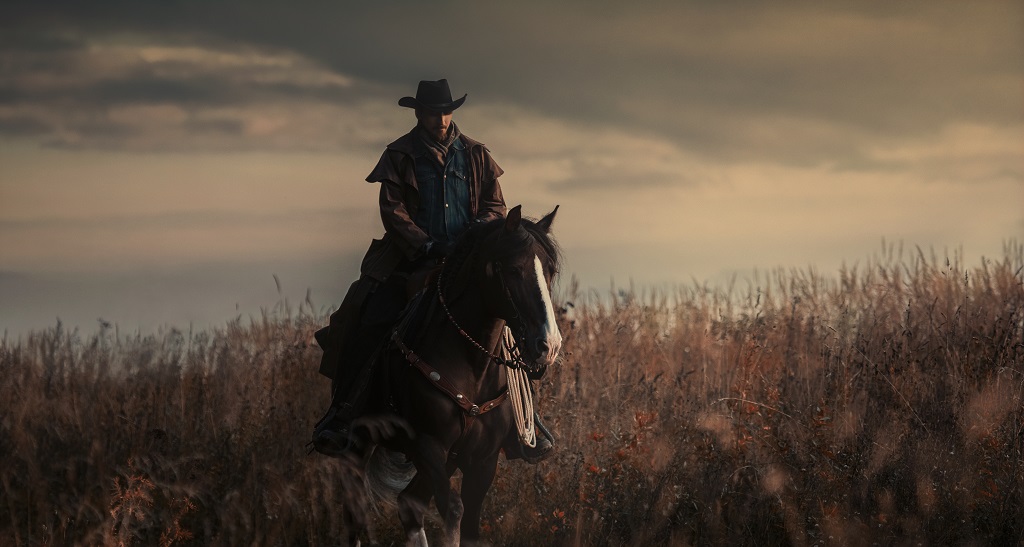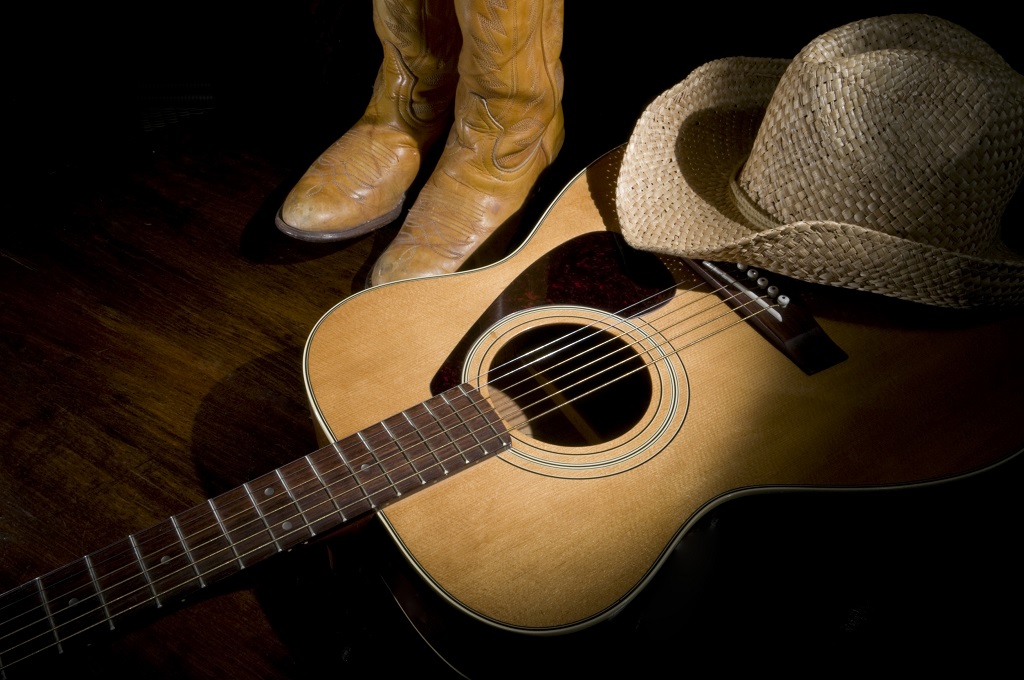Displaced Highlanders and reivers-turned-drovers created the all-American cowboy, gifting him his cattle-herding skills, outsider status and, best of all, his campfire songs .
Pearl Zane Grey, to give him his full name, is widely acknowledged as the creator of the ‘western’.
Riders of the Purple Sage, first published in 1912, may be as much about Mormon polygamous marriages as it is about thrilling equestrian derring-do, but Grey was clear about his literary influences: the first ‘western’, he said, was Walter Scott’s Waverley.
The parallels are striking: both writers looked at how a country can be simultaneously wild and civilised, reactionary and progressive, the home of the settled and the traveller, and a place where vendetta and justice co-exist. But Grey’s fascination with Scott is part of a larger story.
The iconic figure of the cowboy is part of modern mythology. Take, for example, Sheriff Woody Price from Pixar’s Toy Story, the rural gentleman contrasted to, pitted against and finally reconciled with the deluded technological astronaut Buzz Lightyear. It’s the old 1066 And All That vision of the ‘right but rotten versus the wrong but romantic’ version of history that is played out in Cavalier and Roundhead, Confederacy and Union, Covenanter and Claverhouse.
The cowboy – outsider but nobler than the aristocrats, deeply moral but legally suspect, at home only when he is travelling – is a legend before he puts his chaps on.
The real history of the cowboy has tended to concentrate on the Spanish influence on the character. ‘Buckaroo’, for example, is an anglicisation of the Spanish word vaquero; and it is certainly true that most ideas of horsemanship came into Europe via the Moors’ rule in al-Andalus.
Legend has it that after the Battle of Tours in 732 – where the Arabs fought the Franks – the triumphant Frankish leader Charlemagne was presented with the true spoils of victory: spurs, saddles and bits. Without that victory, the European idea of the knight on horseback would have been delayed for centuries.
The knight continued as an ideal: it’s notable that Don Quixote is on horseback, but Sancho Panza rides a donkey. But being a horseman gradually became a more feasible occupation.

The wife of the Armstrong clan chief famously informed her husband that the larder was empty by putting a pair of spurs on his dinner plate. Being an arable farmer was difficult when armies would routinely cross the border and either help themselves or burn your crops; being a swift thief who understood how to deal with cattle was a far easier option.
The late 18th century and early 19th century saw, as Adam Smith understood, a division of labour. Not only did good horsemen diversify into pulling phaetons for the gentry, but the descendants of reivers became drovers. Drovers would move sheep and cattle, on the ‘old ways’ established before the road network. It was quicker, more efficient and easier if you were on horseback behind the herd, and you could easily round the beasts as well as drive them.
Walter Scott explores these changes in ‘The Two Drovers’, in Chronicles of the Canongate, where we learn that moving a herd from Doune to Cumberland was unexceptional. As the rise of the railways in the 19th century superseded traditional droving, a new market was opening in America.
Scots had been emigrating to America since the 17th century, with major waves of settlers leaving in the wake of the Jacobite defeat in 1745 (Flora MacDonald went to the thriving Highland colony on the Cape Fear river in North Carolina in 1775), and then through forced migration during the Clearances. It is estimated that in 1790 some 15% of the population of South Carolina were of Scots descent (a figure which could feasibly be doubled if Ulster Scots were included). Scots particularly settled in Appalachia, where many Scots words are still part of the local dialect.
In the 19th century, entrepreneurial Scots were behind the formation of many of the largest cattle empires: the Prairie Land & Cattle company was based in Edinburgh, and the Matador Land & Cattle Company – precursor to the King Ranch in Texas – was based in Dundee, and managed by Murdo Mackenzie, who was first employed on Balnagowan Estate.
The Chisholm Cattle Train in Texas is named after the half-Scottish, half-Cherokee trader Jesse Chisholm. The Corralitos Ranch in Chihuahua County, once so big it had its own currency, was managed for three generations by Scots- Americans called William Walter Wallace.

The most significant impact of Scots culture on the figure of the cowboy, however, is in terms of music. Although the connection between Appalachian bluegrass and Scottish music has been widely discussed, and the use of the ‘Scotch Snap’ – the syncopated rhythm found in strathspeys – was deployed by Aaron Copland for his Billy the Kid ballet score, the study of how cowboy songs evolved is less well known.
Perhaps the most famous cowboy ballad, The Streets of Laredo (‘Then beat your drum slowly and play your fife lowly, / And play the dead march as you carry me along, / And take me to the graveyard and throw the sod o’er me, / For I’m a young cowboy and I know I’ve done wrong’), is based on an Ulster Scots poem and song The Bard of Armagh or The Unfortunate Rake.
Likewise, Jamie Raeburn became Buffalo Skinners, The Nightingale turned into Wild Rippling Waters and Home, Boys, Home eventually metamorphosed into The Button Willow Tree. Badger Clark, the cowboy poet, sang A Bad Half Hour to the tune of Annie Laurie.
According to Rob Gibson, the former MP and MSP and author of one of the only books devoted to the subject, Plaids and Bandanas: From Highland Drover to Wild West Cowboy, the Aberdeen whaling ballad Fareweel Tae Tarwathie was the original on which The Railroad Corral was latterly based: the tunes persist while the words change dramatically: ‘Our ship is well rigged and she’s ready to sail / Our crew, they are anxious to follow the whale / Where the icebergs do float and the stormy winds blow / Where the land and the ocean are covered with snow’ becomes ‘Come take up your cinches and shake out your reins / Come wake your old bronco and break for the plains. / Come roust out yoursteers from the long chaparral, / For the outfit is off to the railroad corral.’
In 1913 the scholar Louise Pound wrote about ‘The Southwestern Cowboy Songs and English and Scottish Popular Ballads’, where she argued that in the originals people sang about nobles and kings, whereas the cowboy – the acme of rugged individualism – sang about himself.
In contrast to the image of the Scot as plantation manager (‘whippers-in or Neger-Bishops are either Scotchmen or their Americanised descendants,’ said one writer), the lonesome singing cowboy is perhaps an image of Scots-American life that Scots can take pride in.
- This feature was originally published in July 2013.
TAGS

